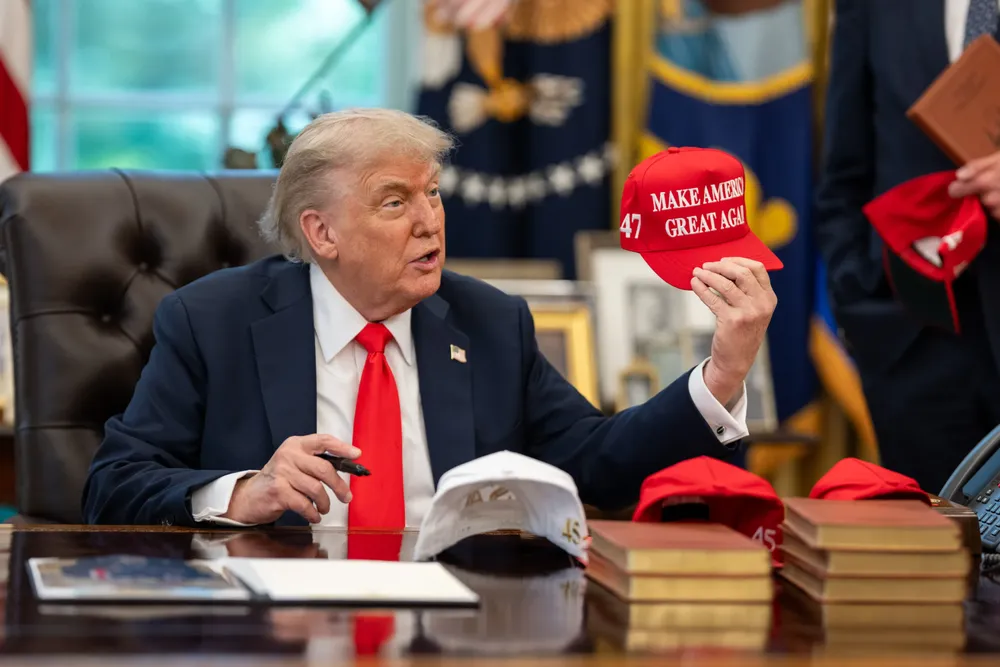'US the loser' as Trump batters offshore wind project into submission
Example made of Atlantic Shores latest evidence that US is 'closed for business' to offshore wind, says analyst

The US has “a lot of explaining to do” after President Donald Trump succeeded in torpedoing a major EDF-Shell offshore wind project, prompting a warning that billions in sector investment could now flow to rival markets like Canada and South Korea.
France’s state-owned EDF and British oil giant Shell have now formally thrown in the towel on their Atlantic Shores project off New Jersey, asking local regulators to cancel key certificates they had secured.
Trump had singled out the project as one he wanted “dead and gone” and the US Environmental Appeals Board duly obliged in March when it “inexplicably” voided its clean air permit.
"It's no surprise that Atlantic Shores is cancelling its contract,” said Harrison Sholler, an offshore wind analyst at BloombergNEF. “The project's economics were already challenged by high cost inflation, and New Jersey denied its attempt to rebid and win a higher offtake price to cover those increased costs.”
The Trump Administration revoking the project's permit was "the last straw.”
EDF is not giving up the lease, he notes, and may hope to restart the project in the future – “if the political climate for US offshore wind improves.”
Stephanie Francoeur, senior vice president at industry group Oceantic Network, said the move to cancel the permits is a result of the “current unpredictability surrounding the federal permitting process”.
This uncertainty has primarily stemmed from an executive order Trump issued on his first day back in power which halted all new leasing for offshore wind projects and placed existing projects under review.
This has all served to further delay a “much-needed source of reliable, affordable, and renewable power for New Jersey businesses and families,” said Francoeur.
“In order to ensure long-term grid security for New Jerseyans, and to prevent other states from facing a similar fate, it is critical that the federal government reopen the permitting process and offer a predictable path for American offshore wind projects to move forward.”
He framed the withdrawal as giving Atlantic Shores a “reset period,” giving its backers a chance to ensure customers “continue to get a fair deal” for critical infrastructure delivery. “And with record demand for electricity outpacing supply, one thing’s for sure: New Jersey needs more power generation.”
Why was there no Empire Wind-style fightback for Atlantic Shores?
EDF and Shell’s move to pull the plug on Atlantic Shores for the foreseeable future comes just weeks after oil major Equinor successfully fought back against a similar Trump Administration assault on its Empire Wind project off New York.
In that case, the Trump Administration had issued a stop work order for the project, which was already mid-construction, provoking incredulity and outrage inside and out of the offshore wind sector.
But after a high-powered lobbying campaign from Equinor, its owner, the Norwegian state, and New York Governor Kathy Hochul, Trump folded and work on the project resumed.
So why was there no similar high-profile fightback from the Atlantic Shores backers, which include another oil major and another state-owned power giant in the form of France’s EDF? After all, as per the ‘Taco’ jibe that has so riled the US President lately and was evidenced by Empire Wind, when things get tough: ‘Trump Always Chickens Out’.
That left EDF to “potentially go it alone,” said Philip Totaro, CEO of renewables analytic firm IntelStor. “It was simply more of a risk than EDF was willing to take,” he said, noting that’s why it had the joint venture with Shell in the first place.
The projects in New Jersey were in any case “a bit more complicated” than those in New York, said Totaro. The New Jersey state government’s demand for a share of the tax breaks for Orsted’s then-planned Ocean Winds projects in 2023 was “the first of many dominoes to fall that has ultimately contributed to Atlantic Shores pulling the plug.”
As US ‘closes for business,’ other markets open
In light of US policy that has created too much uncertainty for offshore wind, Totaro said that project developers are now seeking a “more friendly and welcoming environment where they can see a return on their investment.”
Recent decisions in Nova Scotia and Newfoundland and Labrador are therefore making Canada “more attractive” as a destination for offshore wind projects, “especially those which had originally been destined for the US,” said Totaro.
There is still CAD$1bn in port infrastructure improvements and supply chain investments that need to take place there, he said, but the country already boasts some factories to support the ramp up.
If the Trump Administration wants to “paint itself as pro-business,” Totaro said it has “a lot of explaining to do when they insist on costing US citizens job opportunities as well as tax revenue.”
“That’s all while turning away almost $60bn in investment near-term and torpedoing an offshore wind market in the US that could be worth close to $3tn in value if we built out the full technical and commercially viable potential.”
“Since January, the US has been hanging out a sign that says ‘we’re closed for business’ across multiple growth industries, including offshore wind,” said Totaro. “That is certainly making Canada and the rest of the world great again, not the US.”
(Copyright)